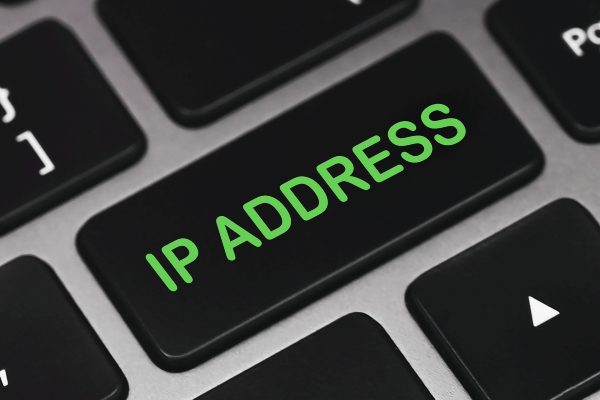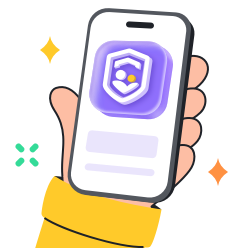If you are a parent trying to protect your child online, you might be looking for ways to find someone’s IP address. This can help you understand who your child is interacting with or which websites they are accessing. An IP address works like a digital home address for any device that connects to the internet.
Finding an IP address requires care, as there are legal rules and privacy concerns involved.
In this guide, we explain what an IP address is, why it matters, and the proper steps to find someone’s IP address in a way that is safe, legal, and respectful of privacy.
What is an IP Address?
An IP address is a unique number assigned to users connected to the Internet for communications. While IPv4 often includes numbers, IPv6 sometimes includes letters.
- IPv4: IPv4 is the most used version and mainly uses 32-bit addresses. These numbers are mainly separated by dots and support approximately 4.3 billion addresses worldwide. These numbers often range between 0 and 255.
- IPv6: IPV6 was mainly developed to help cover up the inadequacy of IPv4. This version uses 128-bit, which automatically increases the number of available IP addresses. It’s essential to note that this version may sometimes include letters in certain instances.



How IP addresses identify devices on the internet:
Whenever you connect to the internet, your device is allocated an IP (Internet Protocol) address, which is either temporary or permanent. This address is necessary for your device to send and receive data online.
- Connecting to the internet: An IP address is assigned to your device by your ISP when you link your device to the internet via a router or cell network. This IP is your online identifier for that session.
- Requesting data: When you type a web address, your request goes to a Domain Name System (DNS) server, which then checks for the website name (such as www.example.com) and returns an IP address. This process guarantees that your request gets to the right server.
- Data exchange: The server of the website receives your request and sends you back the required data (text, pictures, or video) to your IP address. This two-way communication is how everything works online, from checking emails to video calling.
Note: Although the IP address may indicate the approximate location of a device (city or area), it doesn’t provide personal information like your name, or home address.
FlashGet Kids helps parents secure their kids’ digital world from potential threats.
Why would a parent want to find their child’s IP address?
The internet plays a crucial role in kids’ daily lives, from learning to entertainment. While there are benefits to having access to the internet, there are also dangers, like being tracked by strangers.
Monitoring online activity for safety
Identifying a child’s IP address can help parents monitor how the child uses the internet to prevent exposure to harmful digital content. It can also help detect access to unsafe platforms or contacts that might lead to cyberbullying. Or even interactions with online predators and access to unauthorized contact. This enables parents to act early and protect their children from emotional or psychological damage.
Tracking internet and device usage
With an IP address, parents can track the frequency with which their kids have access to the internet or visit certain platforms. This will give parents a clear picture of how often their kids have access to the internet. So they can set healthy limits to allow kids to focus on other activities. It also gives a better understanding of the networks or locations from which the device is being used.
Filtering inappropriate or unsafe content
Finding your kid’s IP address would help you install sophisticated filtering systems and parental controls. This will help you monitor and manage your kids digital access more effectively. This works in preventing kids from accessing adult content, violent videos, and deceptive sites. With this, you can ensure that your kids only access appropriate sites that match their age bracket.
How to find someone’s IP address?
Accessing an IP address can be beneficial, particularly for parents who worry about their kids’ online safety. Tracking an IP address is not that difficult since there are several techniques, ranging from network monitoring tools to parental control software.



1. Using network monitoring tools
Home router settings are one of the simplest and most straightforward ways of identifying a child’s IP address. Routers normally maintain a log of devices connected to the network, and give them unique IP addresses.
– Access the router admin panel:
Most modern routers come preset with a system that the network administrator can use to view a list of connected devices. Parents can access this information by logging into the router’s admin settings to use their web browser.
– Identify connected devices:
When parents access router settings, they can see a list of connected devices labeled by their assigned IP address.
– Monitor traffic or activity:
There are also some routers that have features for monitoring live data usage or blocking sites. This gives parents more direct control over internet access and a better idea about what the child is doing on the Internet.
2. Use Flashget Kids’ parental control app
Parental control apps have features that can help you manage, guide, and protect your child’s digital life. One such app is FlashGet Kids.
It embodies features like browser safety that help kids be safe while browsing online. The browser safety feature has a whitelist of sites kids can be allowed to access and a blacklist of websites that are prohibited.
With FlashGet Kids, you can monitor your kid’s online presence and ensure they don’t access sites that require users to share personal details.
Risks and legal implications of finding someone’s IP without consent
Even though parents might have legitimate reasons, such as protecting their kids’ safety, it has to be done in a regulated manner. Misusing someone’s IP address through tracking without appropriate consent or legal justification has serious consequences. That’s why you need to understand the risks and legal implications of accessing someone’s IP address without their consent.
Violation of privacy rights
Accessing other people’s IP addresses without their consent is a serious way of invading people’s privacy. An IP address is viewed as part of an individual’s digital identity. And in most countries, tracking or collecting these addresses without consent goes against data protection law. Unauthorised access may be taken as a form of surveillance. And victims may be entitled to take substantive steps if they feel their privacy has been violated, intentionally or not.
Potential cyberstalking charges
Cyberstalking can involve repeatedly trying to track someone’s online activity or devices using their IP address without clear permission. In many regions, this is considered a criminal offense, especially when it causes the person to feel threatened or harassed. What may begin as curiosity or concern can eventually become illegal if the monitoring continues persistently..
Misuse of IP Information
In some instances, IP information can be used for malicious purposes. With such information, cyber criminals can identify someone’s whereabouts, making hacking attempts more feasible. That’s why each country has strict laws and regulations about access to someone’s IP address.
Use risk-free monitoring apps to manage your kids internet access
Monitoring your kids’ online activity is difficult for parents who have to balance their parental roles and manage their kids’ access to the internet. Parents can use parental control tools to manage kids effectively without infringing on their right to privacy.
With a parental control tool like FlashGet Kids, parents can monitor their kids’ online access and ensure they don’t share personal data with strangers or phishing sites. You can set up the alert feature to receive notifications anytime your kids are involved in risky online behaviors. The screen mirroring function can help you see through their device to check their interactions and ensure they’re not giving out personal information to strangers.
How to protect your kid’s IP address and personal data?
The online space empowers kids to learn, communicate, and enjoy entertainment. However, carelessly sharing personal data can also lead to risks like cyberbullying and phishing attempts. To manage this situation, parents need to take a central role and implement measures that will protect kids online.



1. Limiting your child’s exposure to online threats using powerful tools
Managing kids’ online access is easier said than done, but the right techniques and tools enable you to achieve measurable success. That means you need an effective parental control tool with the right features to manage and protect kids from online threats.
One such tool is the FlashGet Kids app. It has incredible features like daily usage, which helps you track their activities and the apps they frequently use. With its browser safety feature parents can set a whitelist of sites they can access and a blacklist of sites that are restricted. These FlashGet Kids app features ensure that kids have a safe digital experience.
2. Teaching kids safe internet practices
Parents need to teach children the rules of safe internet browsing and things they should avoid. This includes having strong passwords, being careful about the information they post online, and knowing how to identify suspicious links or sites.
Children should also learn how to restrict access to app permissions and refrain from oversharing details like their name, school, or location. Normal conversations in relation to digital privacy can help children understand the value of their personal data and how to protect themselves.
3. Updating devices and software
Ensuring a kid’s device is secure includes frequently updating software, installing trusted antivirus programs, and enabling firewalls on all devices. Malware often targets old systems and unprotected devices since they are the easiest targets for cyber threats. By ensuring secure devices, parents minimize the risk of unauthorized access to their child’s information and data.
Conclusion
There are numerous ways you can access someone’s IP address through network monitoring tools and apps, but it has to be within the law. Most countries have measures in place to protect all users and ensure they have safe internet access.
However, parents can use parental control tools to protect their kids from sharing personal data and phishing attempts. With tool like FlashGet Kids that have features like browser safety, daily usage, screen time, and screen mirroring, parents can easily manage their kids.

